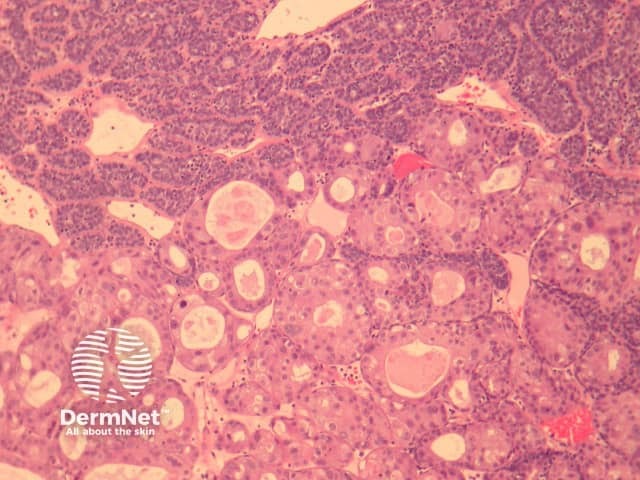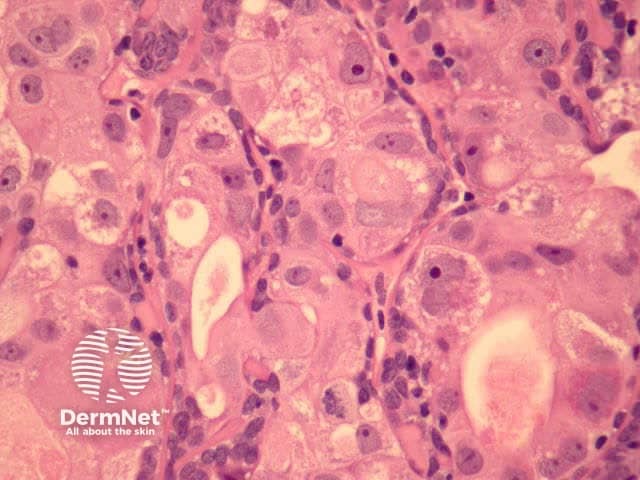Main menu
Common skin conditions

NEWS
Join DermNet PRO
Read more
Quick links
Eccrine spiradenocarcinoma pathology — extra information
Lesions (cancerous) Diagnosis and testing
Eccrine spiradenocarcinoma pathology
Author: A/Prof Patrick Emanuel, Dermatopathologist, Auckland, New Zealand, 2014.
Introduction Histology Special studies Differential diagnoses
Introduction
Eccrine spiradenocarcinoma is a rare sweat gland tumour. It typically arises within a pre-existing eccrine spiradenoma that has been present for many years.
Histology of eccrine spiradenocarcinoma
In eccrine spiradenocarcinoma, sections show areas of benign eccrine spiradenoma with an abrupt transition in morphology (figures 1, 2). The malignant areas can be carcinomatous or sarcomatous. The carcinoma typically shows marked nuclear pleomorphism, atypia and mitoses (figures 2, 3).
A low-grade form has also been described in which the tumour cells show lesser nuclear atypia but the usual architecture of eccrine spiradenoma is lost, there are increased mitoses and often infiltration of surrounding structures.

Figure 1

Figure 2

Figure 3
Special studies of eccrine spiradenocarcinoma
None are generally needed. Stains to examine lymphatics (D2-40) or the proliferative rate (ki67) may be helpful.
Differential diagnosis of eccrine spiradenocarcinoma
Metaplastic changes within a benign eccrine spiradenoma. Squamous metaplasia is not uncommon in benign lesions but usually shows minimal nuclear atypia.
References
- Pathology of the Skin (Fourth edition, 2012). McKee PH, J. Calonje JE, Granter SR
On DermNet
